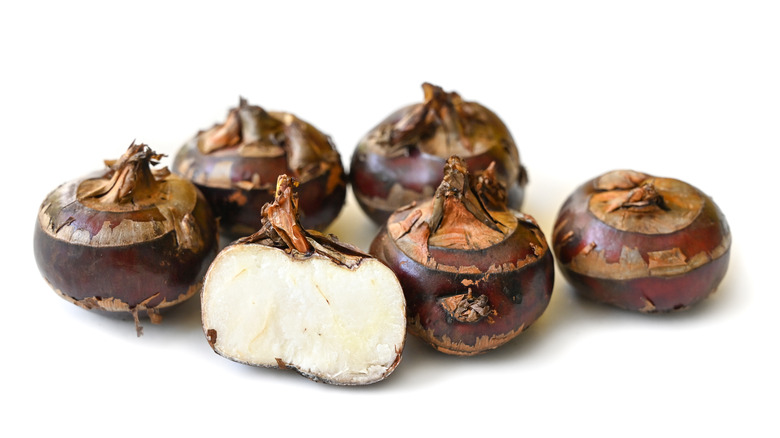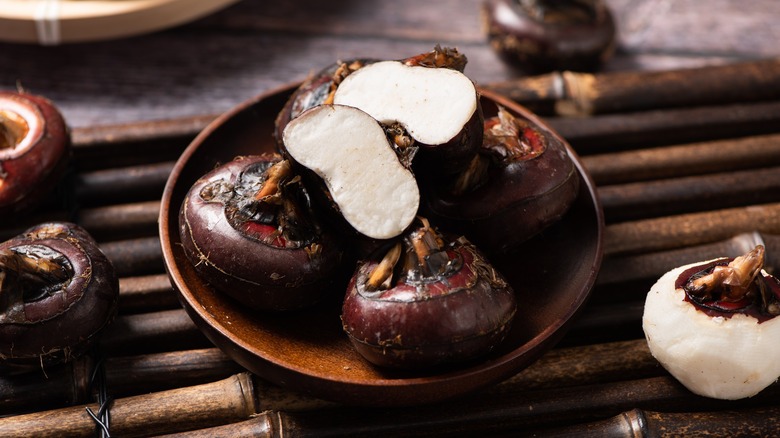The Reason Fresh Water Chestnuts Are Worth Searching For
If you love making Chinese or Southeast Asian food, then one way or another, you'll have to familiarize yourself with water chestnuts. These veggies (they're not a nut!) are a staple in many Asian dishes, from Cantonese steamed meatballs to Thai thaphim krop. With their crispy crunch and slightly sweet, nutty flavor, water chestnuts can seriously level up the taste and texture of these dishes.
When you go shopping for water chestnuts at delicatessens or Asian markets, you'll come across two options: fresh or canned. Since water chestnuts aren't super popular outside Asia, it's way easier to find the canned version. But here's the catch: the canning process tends to zap most of the veggie's natural sweetness, leaving them bland. That's why cooks won't ever use them as a flavoring component in dishes. Instead, canned water chestnuts are chiefly used to add crunch to a dish only.
For both flavoring and texture, that's where you need to use the fresh stuff. They might be a bit trickier and a tad pricier, but they're worth it. Fresh water chestnuts beat canned in every department: they're sweeter, crunchier, and they even have a juicy center that canned ones don't have. So, if you can swing for it, try and go for fresh water chestnuts every time.
What can you do with water chestnuts?
As we mentioned earlier, fresh water chestnuts can bring a delightful crunch and subtle sweetness and nuttiness to any dish that you add it to. In Chinese cuisine, these veggies are heavily starred in stir-fries, where their exceptional texture and taste can combine beautifully with other veggies like mushrooms, sugar snap peas, broccoli, and baby corn to create a harmony of vibrant flavors and varied texture.
But their usefulness extends far beyond stir-fries. Imagine adding them to dips for that satisfying, crispy texture. Water chestnuts have been added to great effects in a number of cream and mayonnaise-based dips. They can even be used to transform salad dressings by infusing them with a nice, crispy element.
And if you're planning to prepare a hot-and-sour soup recipe, you can introduce sliced water chestnuts toward the end of the cooking process. With good enough timing, you'll be able to preserve the water chestnuts' crunchiness and prevent them from becoming soft and soggy. When done right, these sliced bits can provide a much-needed textural base for your dish.

